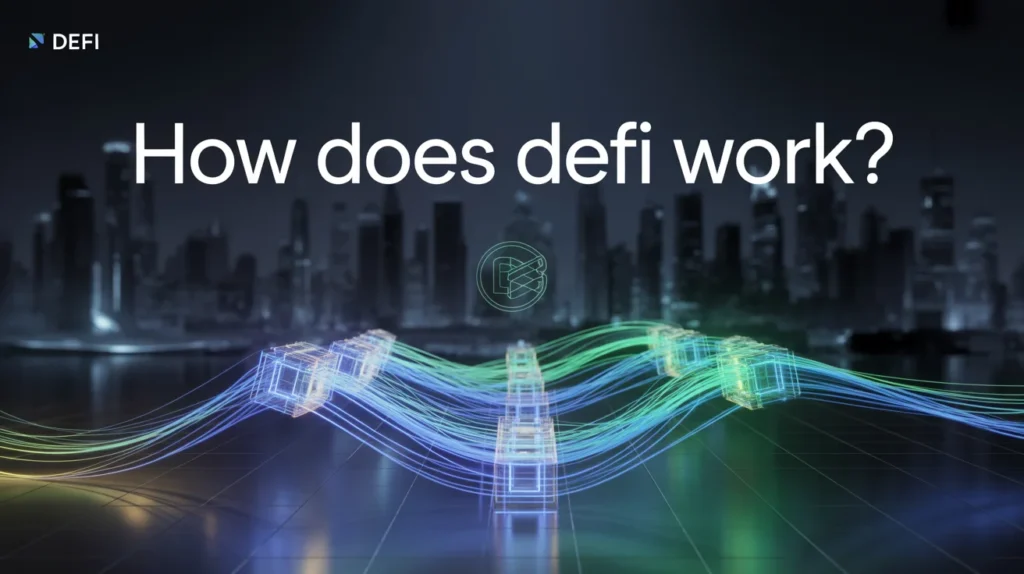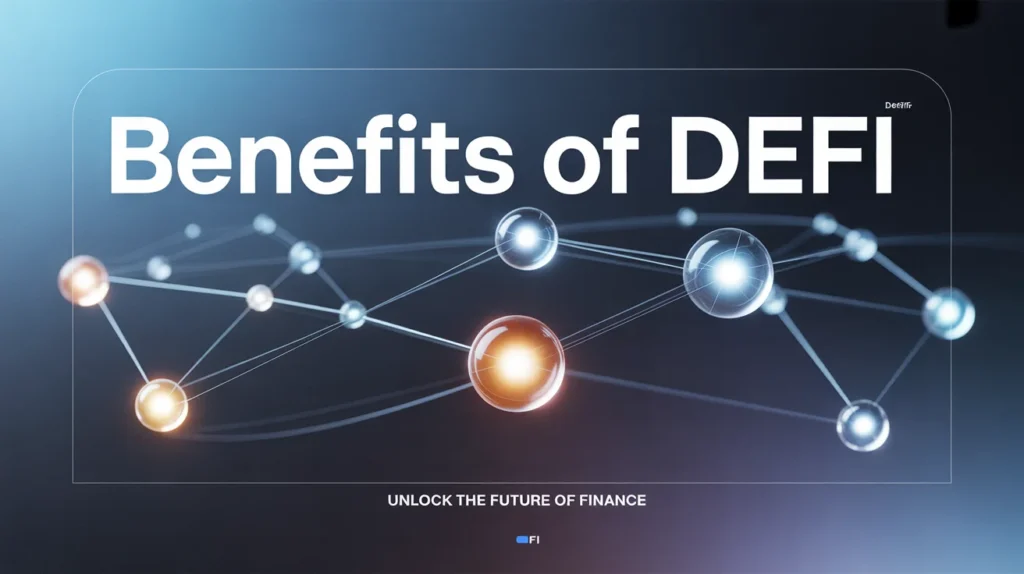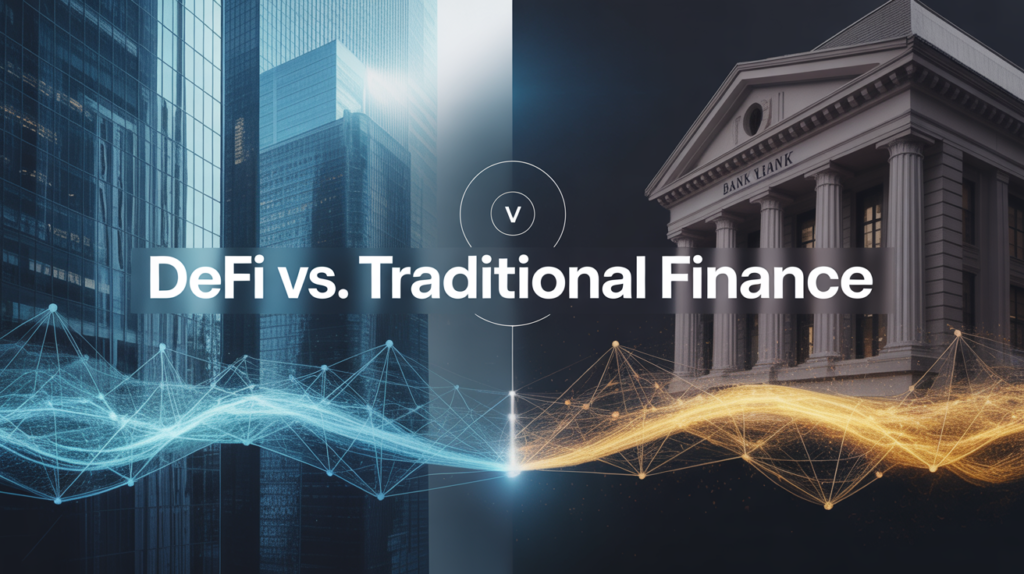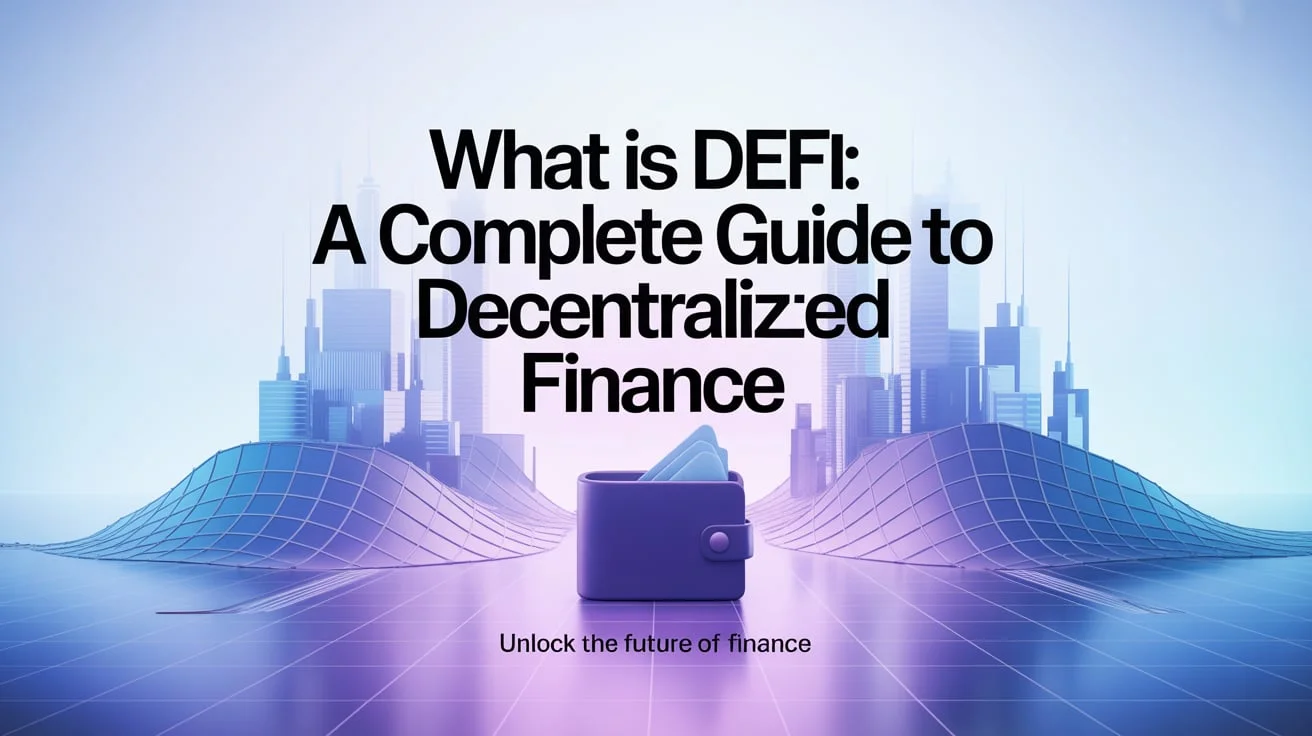The world of finance is undergoing a revolution, and at the heart of it lies DeFi (Decentralized Finance). But what is DeFi, and why is it transforming the way we think about money, banks, and financial systems? Simply put, DeFi is a movement that uses blockchain technology to remove traditional middlemen like banks and brokers, allowing people to borrow, lend, trade, and earn interest directly through smart contracts.
With its promise of transparency, accessibility, and innovation, DeFi is not just a buzzword—it’s shaping the future of global finance.
Understanding DeFi: The Basics of Decentralized Finance
At its core, DeFi stands for Decentralized Finance, a financial ecosystem built on blockchain technology, mostly Ethereum. Unlike traditional finance, where banks and centralized institutions control transactions, DeFi allows individuals to interact directly using smart contracts—self-executing agreements stored on the blockchain.
Key features of DeFi include:
- No intermediaries: Peer-to-peer transactions without banks.
- Accessibility: Anyone with an internet connection can participate.
- Transparency: All transactions are recorded on a public blockchain.
- Innovation: Constant development of new financial products.
How Does DeFi Work?

DeFi works through smart contracts that replace traditional financial agreements. For example, in traditional lending, a bank acts as the middleman. In DeFi, a smart contract executes automatically when both parties meet the terms.
Here’s a simple breakdown:
Traditional FinanceDeFiBank manages savings, loans, and investmentsSmart contracts manage savings, loans, and investmentsRequires paperwork, approval, and feesNo paperwork, permissionless, and low feesLimited to people with bank accountsOpen to anyone with internet and crypto walletControlled by institutionsControlled by code (blockchain)
Key Components of DeFi
To understand what is DeFi, you need to know its building blocks:
- Smart Contracts – The backbone of DeFi, executing transactions automatically.
- Decentralized Exchanges (DEXs) – Platforms like Uniswap allow peer-to-peer trading of tokens without middlemen.
- Stablecoins – Cryptocurrencies pegged to real-world assets (like USDT or DAI) to reduce volatility.
- Lending Platforms – Protocols like Aave or Compound let users borrow or lend assets without a bank.
- Yield Farming & Staking – Methods to earn rewards by providing liquidity or holding tokens.
- Wallets – Tools like MetaMask enable users to access and manage DeFi applications.
Why is DeFi Important?
DeFi is not just technology; it’s a financial revolution. Here’s why it matters:
- Financial Inclusion: People without access to banks can still borrow, save, and invest.
- Transparency: Every transaction is recorded on the blockchain, reducing fraud.
- Global Access: Borders don’t matter—anyone can join.
- User Control: You own your assets, unlike banks where your money is held by the institution.
Benefits of DeFi

- Lower Costs – No middlemen means fewer fees.
- Accessibility – Open to anyone, anywhere.
- Faster Transactions – Blockchain reduces delays.
- Innovation – Constantly evolving with new financial products.
- Ownership – Full control of your digital assets.
Risks and Challenges of DeFi
While DeFi has great potential, it also comes with risks:
- Smart Contract Bugs – Errors in code can be exploited.
- Scams & Hacks – Fraudulent projects can trick users.
- Volatility – Crypto prices can fluctuate heavily.
- Regulation Uncertainty – Governments may impose strict laws.
- User Errors – Mistakes in transactions are irreversible.
Popular DeFi Applications and Platforms
Some of the most well-known DeFi apps (DApps) include:
- Uniswap: A decentralized exchange for token swaps.
- Aave: A lending and borrowing platform.
- Compound: A protocol to earn interest on deposits.
- MakerDAO: Creator of the DAI stablecoin.
- Curve Finance: Specialized in stablecoin trading.
DeFi vs. Traditional Finance

AspectTraditional FinanceDeFiControlCentralized (banks, institutions)Decentralized (users + smart contracts)AccessibilityRequires bank accountOnly needs internet + crypto walletTransparencyLimitedFully transparent on blockchainSpeedSlow (days for transfers)Fast (minutes or seconds)FeesHighLowerOwnershipBank controls fundsUser controls funds
Real-Life Examples of DeFi in Action
- Lending Money Without a Bank: A farmer in Africa can borrow stablecoins from someone in Europe without a bank’s involvement.
- Yield Farming: Investors can stake their crypto and earn rewards just like earning interest in a bank account.
- Cross-Border Payments: DeFi enables fast, low-cost international payments compared to expensive wire transfers.
The Future of DeFi
The DeFi market has grown from less than $1 billion in 2019 to over $50 billion in total value locked (TVL). As blockchain adoption spreads, DeFi could:
- Replace traditional banking in developing regions.
- Integrate with real-world assets like real estate and stocks.
- Create new investment opportunities.
- Become regulated for mainstream adoption.
Should You Invest in DeFi?
Investing in DeFi can be profitable, but it requires caution.
Pros:
- High returns from staking and yield farming.
- Early access to innovative financial tools.
- Decentralized ownership of assets.
Cons:
- Risk of hacks, scams, and market crashes.
- Regulatory uncertainty.
- Complexity for beginners.
If you decide to invest, always research projects, use trusted platforms, and never invest more than you can afford to lose.
FAQs
1. What is DeFi in simple words? DeFi means Decentralized Finance—a system where financial services run on blockchain without banks or middlemen.
2. How is DeFi different from crypto? Crypto refers to digital currencies like Bitcoin, while DeFi uses those currencies to build financial applications such as lending, trading, and borrowing.
3. Can anyone use DeFi? Yes. Anyone with an internet connection and a crypto wallet can access DeFi platforms.
4. Is DeFi safe? DeFi has potential risks, including hacks and scams. It’s safer when using well-known platforms and practicing caution.
5. What is the future of DeFi? DeFi is expected to grow by integrating real-world assets, becoming regulated, and offering more innovative financial services globally.
Conclusion
So, what is DeFi? It’s more than just a trend—it’s a revolutionary financial system built on blockchain that challenges the old ways of banking. By offering transparency, accessibility, and global opportunities, DeFi empowers people to take control of their money like never before.
While risks exist, the potential benefits make it a space worth exploring. Whether you’re an investor, a tech enthusiast, or just curious, DeFi represents the future of finance—decentralized, inclusive, and driven by innovation.


